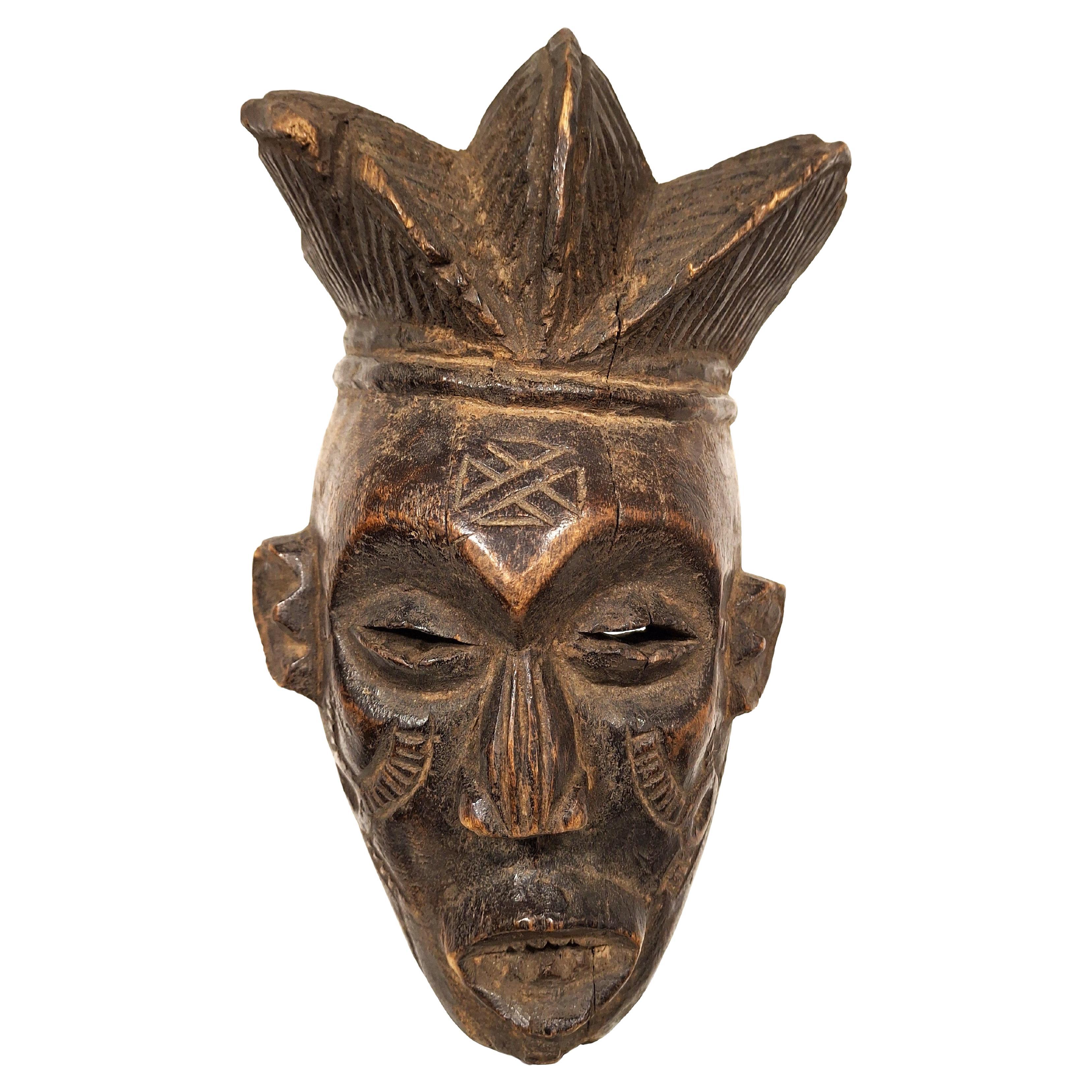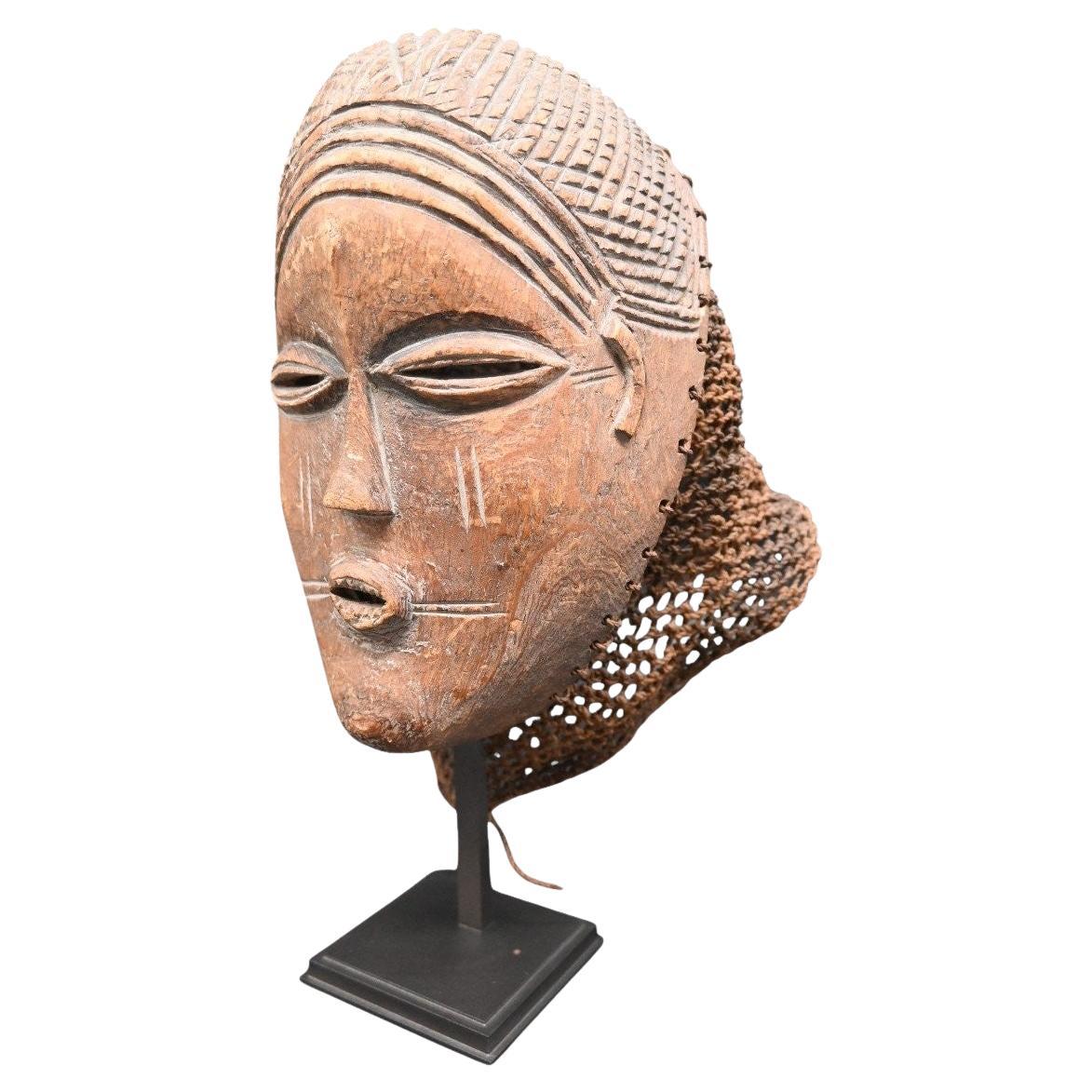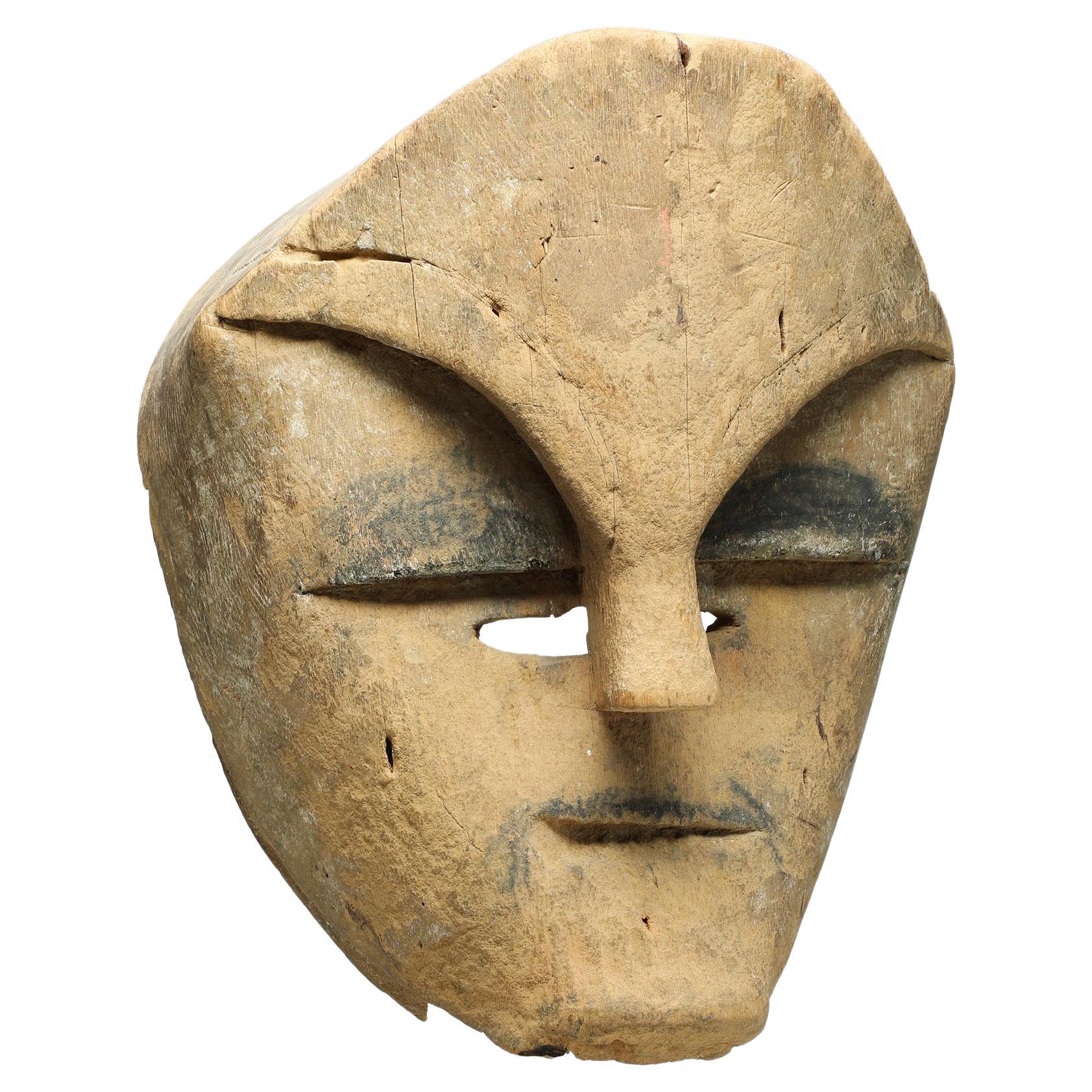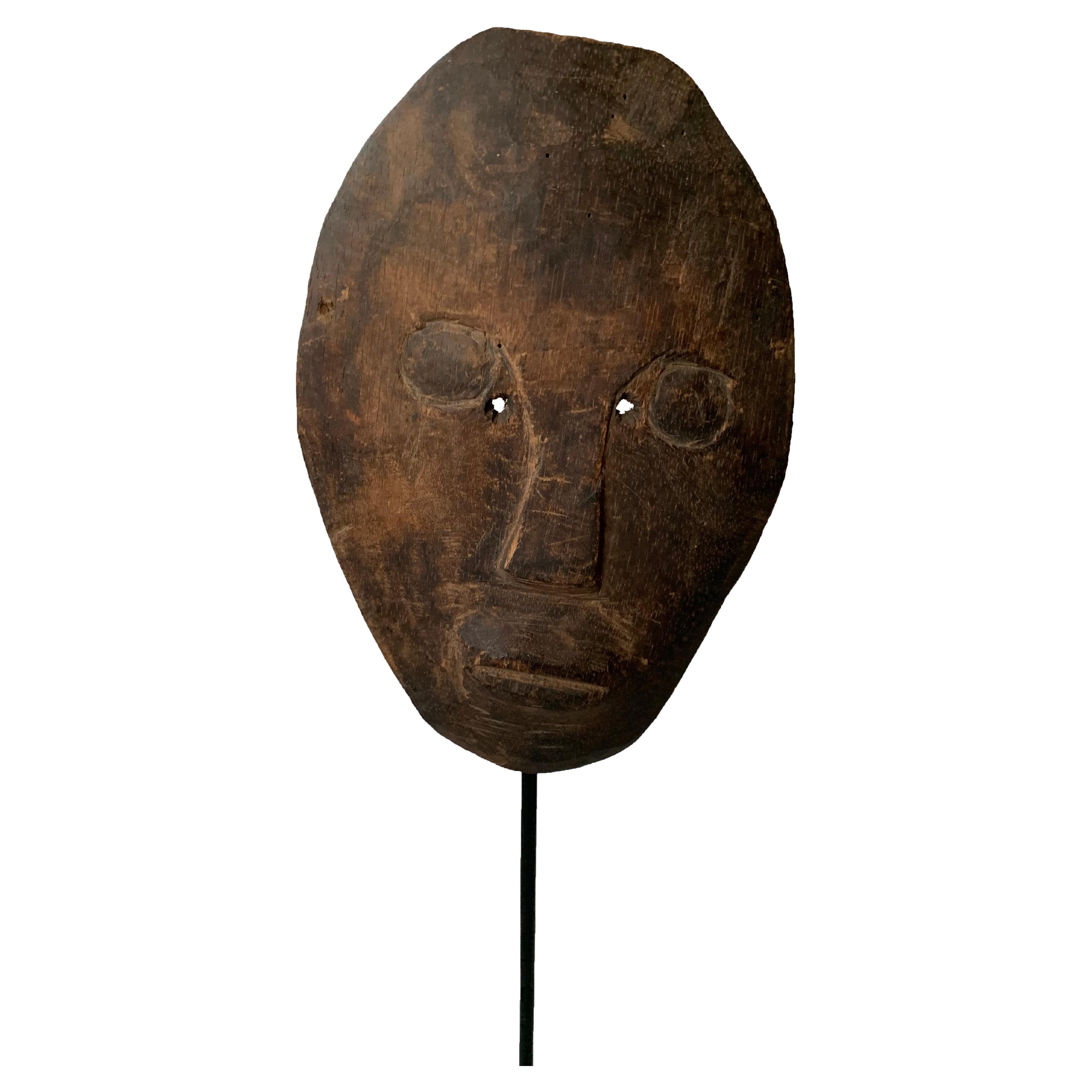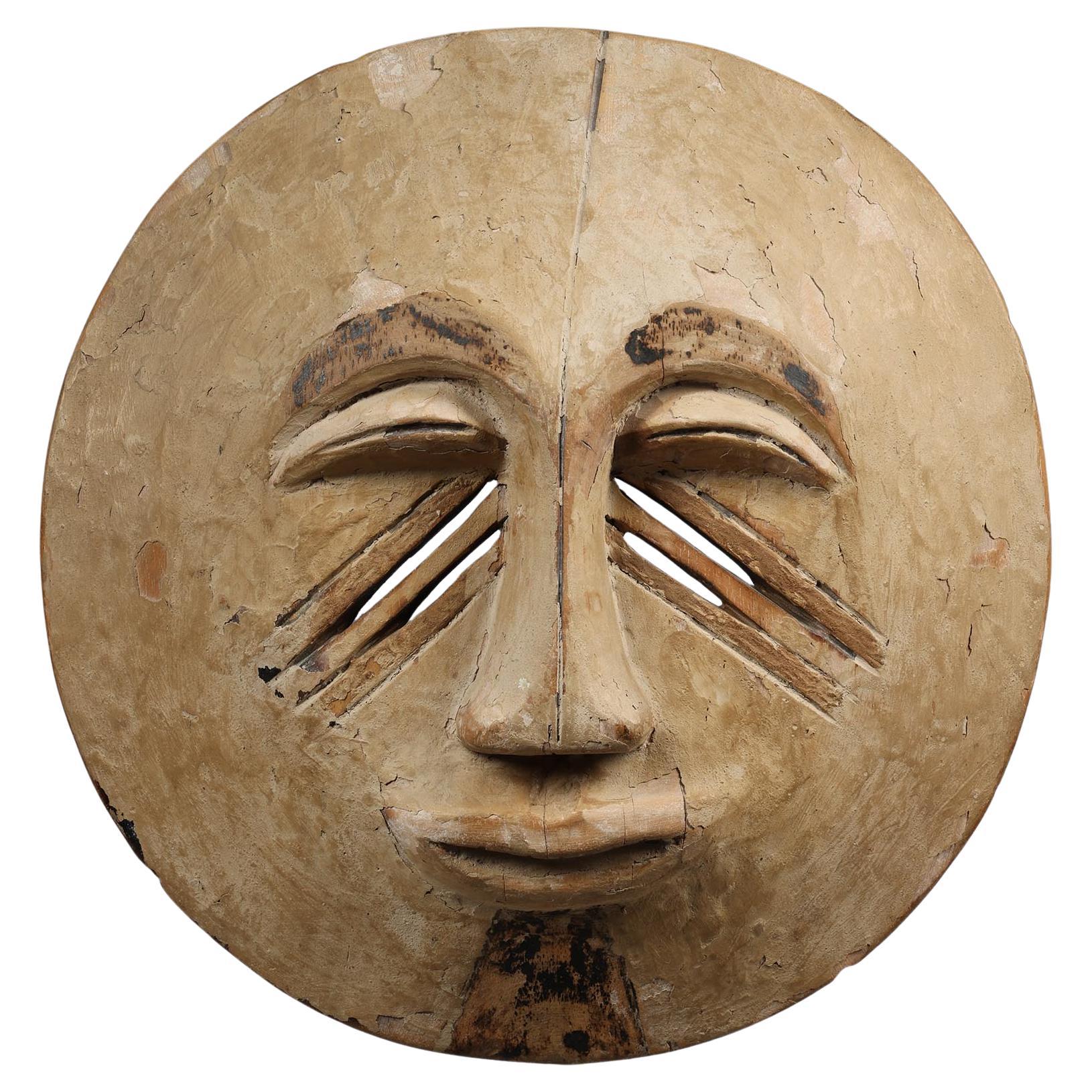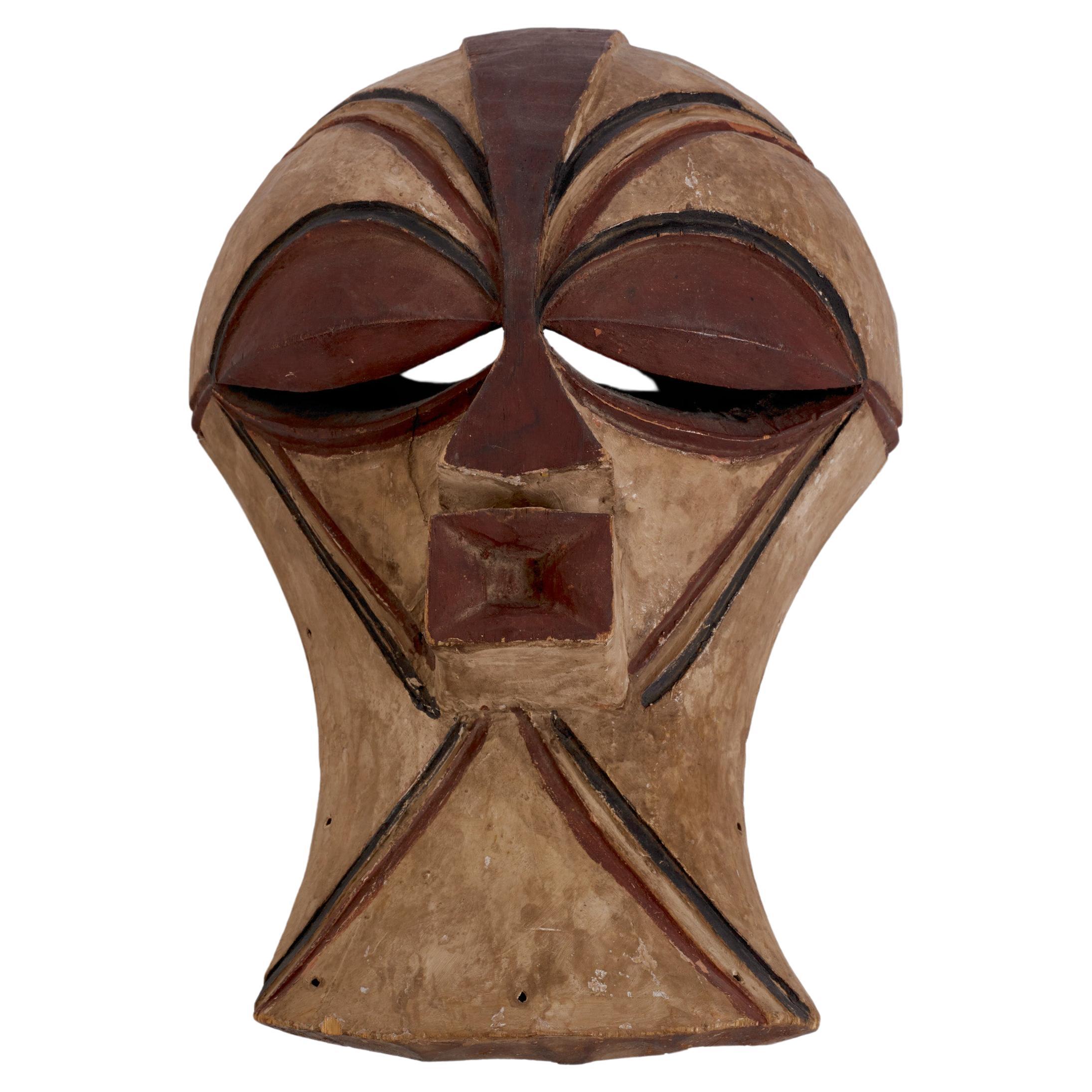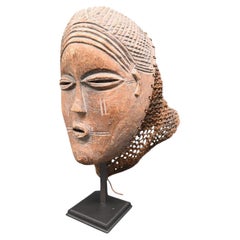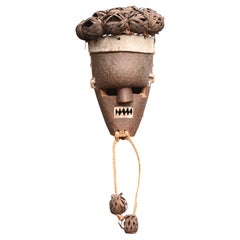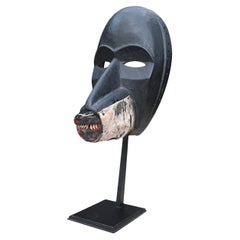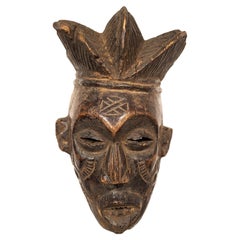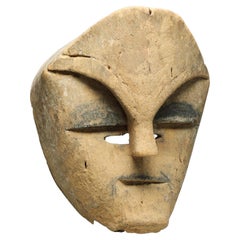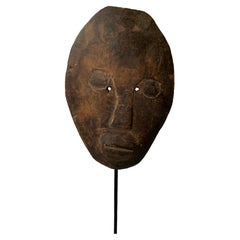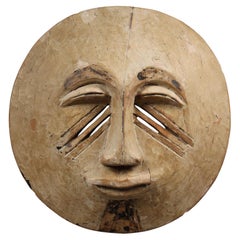Items Similar to Genuine wooden mask from the Punu tribe, Gabon , first half 20th century
Video Loading
Want more images or videos?
Request additional images or videos from the seller
1 of 11
Genuine wooden mask from the Punu tribe, Gabon , first half 20th century
$1,801.48
£1,326.79
€1,500
CA$2,450.77
A$2,723.35
CHF 1,427.06
MX$33,397.01
NOK 18,201.36
SEK 17,123.17
DKK 11,419.27
Shipping
Retrieving quote...The 1stDibs Promise:
Authenticity Guarantee,
Money-Back Guarantee,
24-Hour Cancellation
About the Item
The Punu or Bapunu, are a Bantu meta-ethnicity of Central Africa, mainly in Gabon and a small population in Republic of Congo They are one of the four major people of Gabon, inhabiting interior mountain and grassland areas. They are around the upper N'Gounié and Nyanga Rivers in Gabon.
One of the well known Punu art objects are the white. The masks are life size, they can cover a person's face. They are worn by the dancers in south Gabon. When there is a major community event the dancers wear these masks, one major event would be a dance performed for a secret society. Europeans have been trying to discover the Punu society for a long time, but not until June 1865 did the first European discover the first white mask. Later in 1925-30 Europeans had more access to the societies and the secrecy was less than before.
This mask is carved from a ligth soft wood decorated with natural pigments, with tribal using traces and patina
Dating from the first half 20th century
Heigth 33 cm
- Dimensions:Height: 13 in (33 cm)Width: 7.49 in (19 cm)Depth: 7.88 in (20 cm)
- Style:Tribal (Of the Period)
- Materials and Techniques:
- Period:
- Date of Manufacture:early 20th century
- Condition:Wear consistent with age and use. normal using traces.
- Seller Location:Bilzen, BE
- Reference Number:1stDibs: LU10361244972312
About the Seller
New to 1stDibs
Joined in the past six months.
5.0
Gold Seller
Premium sellers maintaining a 4.3+ rating and 24-hour response times
Established in 1987
1stDibs seller since 2025
7 sales on 1stDibs
Typical response time: <1 hour
- ShippingRetrieving quote...Shipping from: Bilzen, Belgium
- Return Policy
Authenticity Guarantee
In the unlikely event there’s an issue with an item’s authenticity, contact us within 1 year for a full refund. DetailsMoney-Back Guarantee
If your item is not as described, is damaged in transit, or does not arrive, contact us within 7 days for a full refund. Details24-Hour Cancellation
You have a 24-hour grace period in which to reconsider your purchase, with no questions asked.Vetted Professional Sellers
Our world-class sellers must adhere to strict standards for service and quality, maintaining the integrity of our listings.Price-Match Guarantee
If you find that a seller listed the same item for a lower price elsewhere, we’ll match it.Trusted Global Delivery
Our best-in-class carrier network provides specialized shipping options worldwide, including custom delivery.More From This Seller
View AllMwana Pwo Mask From The Chokwe / Tshokwe Tribe, Dr Congo
Located in Bilzen, BE
A serene-looking Mwana Pwo chokwe mask mounted on a custom-made base which is included
Early 20th century
The Mwana Pwo mask was the personification of the ideal woman among the Cho...
Category
Early 20th Century Congolese Tribal Tribal Art
Materials
Wood
Mukinka Mask from the Salampasu tribe, DR Congo, middle 20th century
Located in Bilzen, BE
A wooden mask from the Salampasu tribe called Mukinka.
The mask is covered with copper pieces from 1 x 2 cm and has a beard in vegetal fiber, the top of the head is also covered with...
Category
Mid-20th Century Congolese Tribal Tribal Art
Materials
Copper
Dan Mask With Metal Teeth – Ivory Coast / Liberia, Mid-20th Century
Located in Bilzen, BE
Dan Mask with Inset Metal Teeth – Côte d'Ivoire / Liberia
Mid–20th Century or Earlier
Wood, Metal Inlay
Height:22 cm, width 13 cm
Provenance: Private Collection, Europe
This strikin...
Category
Mid-20th Century Ivorian Tribal Tribal Art
Materials
Metal
African Bird Mask From The Dan Tribe, Ivory Coast, early 1900
Located in Bilzen, BE
Ancient African mask from the Dan Tribe (Ivory Coast, Africa).
Beautiful patina inside and out, in good condition with traces of tribal use.
Ex. French private collection.
Ex. Dutch...
Category
Early 20th Century Ivorian Tribal Tribal Art
Materials
Wood
Genuine copper mask from the Dinga / Ding tribe DR Congo, early 1900
Located in Bilzen, BE
A genuine mask hammered in copper from the Dinga / Ding tribe from the south of DR Congo
Early 1900, but probably older
This kind of anthropomorphic masks are called "ngongo munene"...
Category
Vintage 1910s Congolese Tribal Tribal Art
Materials
Copper
Sepik River (Keram Region), Papua New Guinea Ancestral Bust, mid 20th century
Located in Bilzen, BE
Sepik River (Keram River tributary), Papua New Guinea
Ancestral Bust (Male Ancestor Figure)
Wood, with age cracks and dark matte patina
Height: 24 cm, base diameter 10.5 cm
Period: M...
Category
Mid-20th Century Papua New Guinean Tribal Tribal Art
Materials
Wood
You May Also Like
Chokwe Mask – Mid 20th Century – Angola – African Tribal Art
Located in Ljubljana, SI
Bring home a piece of ancestral heritage with this authentic Chokwe mask from Angola, crafted in the mid-20th century. Rooted in deep cultural tradition, Chokwe masks were once used ...
Category
Vintage 1950s Angolan Tribal Masks
Materials
Hardwood
Rare Gabon Mask From Tsogho Peoples with Character, Central Africa
Located in Point Richmond, CA
Early and rare mask from Gabon, Central Africa, created by the Tsogho peoples. Powerful large mask with carved open eyes, and black painted eyes above, below heavy carved eyebrows. ...
Category
Early 20th Century Gabonese Tribal Tribal Art
Materials
Wood
Early 20th Century Hand-Carved Wood Tribal Mask from Atoni Tribe Timor
Located in Jimbaran, Bali
This very flat mask originates from the Atoni people of Timor, featuring two very small eye holes. For the Timorese people masks portray both male and female ancestors, worn by warri...
Category
Early 20th Century Indonesian Other Masks
Materials
Wood
Early Round Wood Yela M'Bole Mask DRC Congo Africa
Located in Point Richmond, CA
Early to mid century danced light wood round mask from the Yela or M'bole people, Democratic Republic of Congo, Africa. Finely carved mask with carved raised eyes and diagonal scarif...
Category
Mid-20th Century Gabonese Tribal Tribal Art
Materials
Wood
Handcarved Beninese Tribal Mask
Located in Miami, FL
Acquired from Albert F. Gordon's Tribal Arts Gallery in Manhattan in the early 1970s, this is a handcarved wood mask that measures approximately 11.75" wide, 6.25" deep, and 17.75" t...
Category
Early 20th Century Beninese Tribal Wall-mounted Sculptures
Materials
Fruitwood
1950's Lega 'Idimu' Mask, Democratic Republic of the Congo
Located in London, GB
This mid-twentieth century finely carved mask, from the Lega culture in the Democratic Republic of the Congo, displays the typically heart-shaped face of Lega 'Idimu' masks. Traces o...
Category
Vintage 1950s Congolese Tribal Tribal Art
Materials
Raffia, Hardwood
